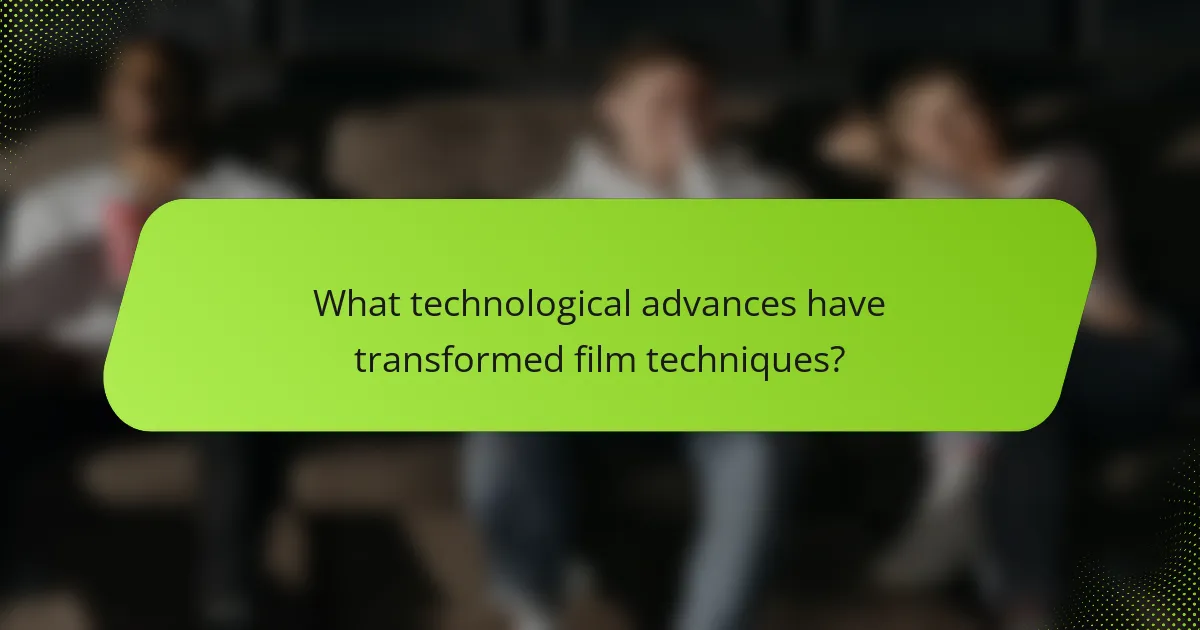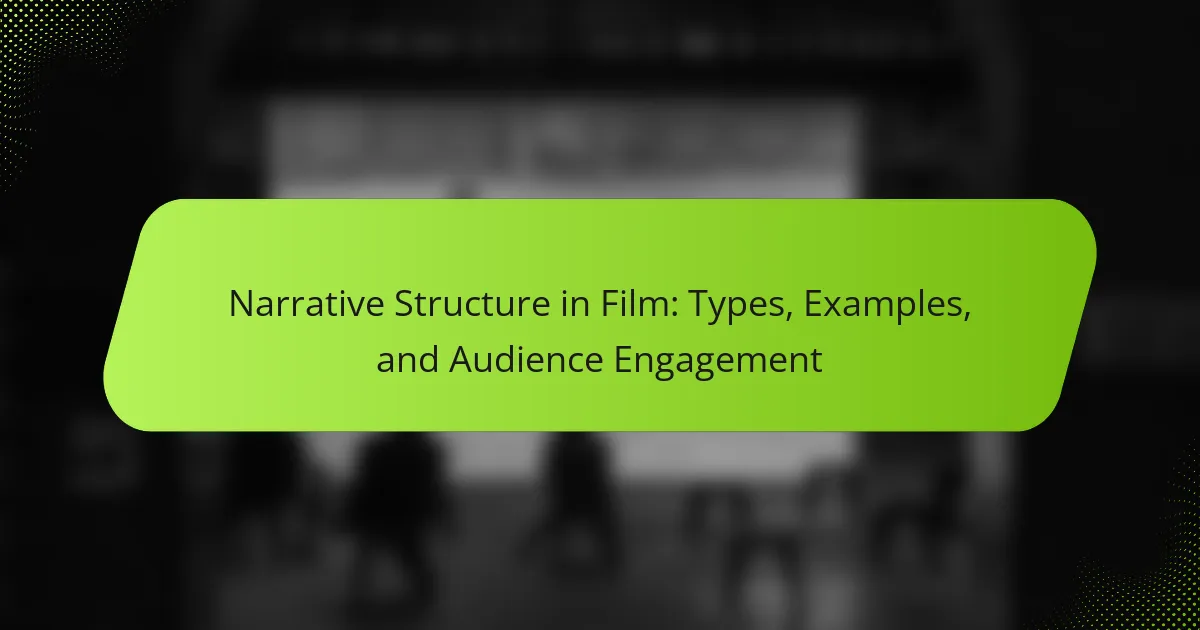
What are the key milestones in the evolution of film techniques?
The key milestones in the evolution of film techniques include the invention of the motion picture camera, the introduction of sound, and the development of color film. The motion picture camera was invented in the late 19th century, allowing for the capture of moving images. The first feature-length film, “The Story of the Kelly Gang,” was released in 1906, showcasing narrative storytelling in cinema. The introduction of synchronized sound in “The Jazz Singer” in 1927 revolutionized the industry, enhancing audience engagement. The transition to color film began with “The Toll of the Sea” in 1922, but it became mainstream with “The Wizard of Oz” in 1939. The advent of special effects was marked by films like “Star Wars” in 1977, which utilized groundbreaking visual effects technology. The digital revolution in the late 20th century transformed filmmaking, enabling CGI and digital distribution. These milestones collectively shaped the cinematic landscape, influencing how stories are told through film.
How did early film techniques shape modern cinema?
Early film techniques laid the foundation for modern cinema. Techniques such as editing, close-ups, and narrative structure emerged in the early 20th century. The use of montage by filmmakers like Sergei Eisenstein influenced storytelling methods. Innovations in camera movement allowed for dynamic shots, enhancing visual storytelling. Silent films introduced visual cues to convey emotion and plot, a practice still relevant today. The establishment of genres during early cinema guided modern film categorization. These foundational techniques continue to shape cinematic language and audience expectations. Historical examples, such as the 1903 film “The Great Train Robbery,” demonstrate the impact of early techniques on narrative structure and pacing.
What were the first notable innovations in film technology?
The first notable innovations in film technology include the invention of the motion picture camera and the development of film stock. The motion picture camera, created by inventors like Thomas Edison and the Lumière brothers, allowed for the recording of moving images. This innovation led to the creation of the first films in the late 19th century. Film stock, made of flexible plastic with a light-sensitive emulsion, was essential for capturing images. Early film stock was developed by George Eastman in the 1880s. The combination of these technologies laid the groundwork for the modern film industry. These advancements marked the transition from static images to dynamic storytelling.
How did silent films influence narrative techniques?
Silent films significantly influenced narrative techniques by emphasizing visual storytelling over dialogue. Filmmakers relied on expressive acting, gestures, and visual cues to convey emotions and plot. The use of intertitles provided context and dialogue, guiding audience understanding without spoken words. This reliance on imagery led to innovative techniques such as montage, where editing created meaning through juxtaposition. Pioneers like D.W. Griffith developed narrative structure, using close-ups and cross-cutting to enhance storytelling. Silent films laid the groundwork for future cinematic techniques, emphasizing the importance of visual composition and editing in narrative development.
What role did sound play in the evolution of film techniques?
Sound transformed film techniques by introducing dialogue, music, and sound effects. This innovation began with the advent of synchronized sound in the late 1920s. The first successful sound film, “The Jazz Singer,” released in 1927, showcased the impact of sound on storytelling. It allowed filmmakers to enhance emotional depth and character development. Sound also improved audience engagement and immersion. Techniques such as sound mixing and editing evolved alongside visual storytelling methods. These advancements paved the way for modern cinematic experiences. Today, sound remains a crucial element in film production, influencing both narrative and technical aspects.
How did the introduction of synchronized sound change filmmaking?
The introduction of synchronized sound revolutionized filmmaking by allowing dialogue and sound effects to be recorded and played back in sync with the visuals. This innovation enhanced storytelling by adding emotional depth and realism to films. It transformed silent films into “talkies,” attracting larger audiences. The first successful synchronized sound film, “The Jazz Singer,” was released in 1927. This film demonstrated the commercial viability of sound in cinema. Filmmakers began to explore new narrative techniques due to the presence of sound. The use of synchronized sound also led to the development of new genres, such as musicals. Overall, synchronized sound significantly altered the filmmaking landscape, paving the way for modern cinema.
What impact did dialogue have on storytelling in film?
Dialogue significantly impacts storytelling in film by conveying character emotions and advancing the plot. It allows characters to express thoughts, motivations, and conflicts directly. This direct communication enhances audience engagement and emotional connection. Dialogue also helps establish tone and setting, providing context for the narrative. Historical examples include early silent films that relied on intertitles, which limited character development. The transition to sound films in the late 1920s, such as “The Jazz Singer,” revolutionized storytelling by integrating spoken dialogue. This shift allowed for more complex narratives and character interactions. Additionally, well-crafted dialogue can create memorable quotes and cultural references, influencing popular culture. Overall, dialogue is essential for depth and richness in film storytelling.

What technological advances have transformed film techniques?
Digital cinematography has transformed film techniques significantly. This technology allows filmmakers to capture images using digital sensors instead of traditional film. Digital cameras offer greater flexibility in shooting and editing. They enable instant playback, reducing the need for extensive reshoots. High-definition and 4K resolution have enhanced image quality dramatically. Advanced software for editing has streamlined post-production processes. Techniques like CGI (computer-generated imagery) have revolutionized visual effects. Innovations in sound technology have improved audio quality and integration. These advances collectively reshape how stories are told in film.
How have camera technologies evolved over time?
Camera technologies have evolved significantly from their inception to the present day. Early cameras, such as the pinhole camera, utilized simple optics and light-sensitive materials. The introduction of the daguerreotype in 1839 marked a major advancement, enabling clearer images on metal plates. The invention of roll film in the late 19th century made photography more accessible and practical.
In the 20th century, the development of 35mm film cameras revolutionized the industry, allowing for greater portability and ease of use. The transition to digital cameras began in the late 20th century, with the first digital image captured in 1969. By the early 2000s, digital cameras became mainstream, offering instant image review and storage.
The introduction of smartphones equipped with high-quality cameras in the 2010s further transformed photography, making it ubiquitous. Today, advancements in sensor technology, image processing, and artificial intelligence continue to enhance camera capabilities, allowing for features such as low-light performance and computational photography.
What are the major advancements in camera design and functionality?
Major advancements in camera design and functionality include the transition from film to digital technology. Digital cameras allow for instant image review and editing. They also offer higher resolution and improved low-light performance. Mirrorless cameras have gained popularity due to their compact size and faster autofocus systems. Additionally, advancements in sensor technology have led to better image quality and dynamic range. Features like image stabilization and 4K video recording have become standard. Connectivity options, such as Wi-Fi and Bluetooth, enable easy sharing and remote control. These innovations have significantly enhanced the user experience and expanded creative possibilities in photography.
How have digital cameras changed the landscape of filmmaking?
Digital cameras have transformed filmmaking by making it more accessible and versatile. They offer high-quality image capture at lower costs compared to traditional film. This shift has democratized filmmaking, allowing independent filmmakers to create professional content. Digital cameras enable real-time monitoring of shots, which improves the efficiency of production. The ability to record and edit footage digitally streamlines the workflow significantly. Additionally, digital cameras support various formats and resolutions, catering to diverse production needs. The rise of digital cinema has led to innovations in visual storytelling techniques. According to a 2020 report by the International Cinematographers Guild, over 90% of films are now shot digitally. This statistic highlights the widespread adoption and impact of digital cameras in the industry.
What innovations in editing techniques have emerged?
Innovations in editing techniques include non-linear editing systems, which allow for more flexible and efficient workflows. These systems enable editors to access any part of the footage at any time. The introduction of digital editing software has revolutionized the editing process. Software like Adobe Premiere Pro and Final Cut Pro offers advanced features like multi-camera editing and real-time playback.
Additionally, the use of artificial intelligence in editing has streamlined tasks such as color correction and sound mixing. AI tools can analyze footage and suggest edits, saving time for editors. Another significant innovation is the rise of cloud-based editing platforms. These platforms facilitate collaboration among remote teams, allowing multiple editors to work on a project simultaneously.
Moreover, the integration of virtual reality (VR) and augmented reality (AR) technologies has opened new avenues for storytelling. Editors can create immersive experiences that engage viewers in unique ways. These innovations reflect the ongoing evolution of editing techniques in the film industry.
How has non-linear editing changed the editing process?
Non-linear editing (NLE) has revolutionized the editing process by allowing editors to access any part of the footage instantly. This contrasts with linear editing, which requires a sequential approach. NLE systems enable real-time editing, making it faster and more efficient. Editors can easily rearrange clips, apply effects, and make adjustments without starting over. This flexibility fosters greater creativity and experimentation in editing. According to a study by the American Film Institute, NLE has reduced editing time by up to 50%. The ability to work on multiple timelines simultaneously enhances collaboration among editors. Overall, NLE has transformed the workflow, making it more dynamic and accessible.
What role do visual effects play in modern film production?
Visual effects (VFX) are crucial in modern film production. They enhance storytelling by creating immersive worlds and characters that would be impossible to achieve with practical effects alone. VFX allows filmmakers to visualize complex scenes, such as large-scale battles or fantastical creatures, effectively engaging audiences. Films like “Avatar” and “The Avengers” showcase the extensive use of VFX to create realistic environments and action sequences. According to a report by the Visual Effects Society, VFX contributes significantly to box office success, with many top-grossing films relying heavily on these techniques. The integration of VFX also streamlines production processes, reducing the need for extensive sets or locations. Overall, visual effects play an essential role in elevating the cinematic experience and pushing creative boundaries in filmmaking.

What future trends are emerging in film techniques?
Virtual reality (VR) and augmented reality (AR) are emerging trends in film techniques. These technologies enable immersive storytelling experiences. Filmmakers are increasingly integrating VR and AR to engage audiences in new ways. Advances in camera technology are also shaping future film techniques. High-resolution cameras and drones allow for dynamic and unique shots. Artificial intelligence (AI) is being used for editing and visual effects. AI tools can streamline production processes and enhance creativity. Additionally, interactive storytelling is gaining traction. This trend allows viewers to influence plot outcomes. These developments indicate a shift towards more engaging and personalized film experiences.
How is virtual reality influencing the future of filmmaking?
Virtual reality (VR) is transforming filmmaking by creating immersive experiences. Filmmakers can now engage audiences in ways traditional methods cannot. VR allows viewers to experience stories from multiple perspectives. This technology enhances emotional connection and engagement with the narrative. Studies show that 70% of users feel more involved in VR storytelling. VR also enables innovative storytelling techniques, such as interactive plots. As a result, filmmakers are exploring new genres and formats. The integration of VR is expected to redefine audience expectations in cinema.
What are the potential applications of VR in storytelling?
Virtual Reality (VR) can enhance storytelling by immersing audiences in interactive narratives. It allows users to experience stories from a first-person perspective. This immersion can lead to a deeper emotional connection with characters and events. VR can also facilitate non-linear storytelling, enabling viewers to make choices that affect the narrative. Additionally, VR can create unique environments that enhance the story’s context. For example, users can explore different settings in real-time. Educational applications of VR in storytelling can provide historical or scientific context through experiential learning. Overall, VR transforms traditional storytelling by making it more engaging and participatory.
How might augmented reality change audience engagement?
Augmented reality (AR) can significantly change audience engagement by creating immersive experiences. It allows viewers to interact with digital elements overlaid on the real world. This interaction enhances storytelling by making it more participatory. For example, AR can provide additional context or background information in real-time during a film. According to a study by the University of Southern California, AR can increase viewer retention by 30%. This retention is crucial for audience connection to the narrative. Furthermore, AR can foster social interaction among viewers, as they share experiences in a more engaging environment. Overall, AR transforms passive viewing into an active, engaging experience.
What trends are shaping the future of film production and distribution?
Digital streaming platforms are reshaping film production and distribution. These platforms enable filmmakers to reach global audiences directly. The rise of platforms like Netflix and Amazon Prime has changed viewing habits. Audiences increasingly prefer on-demand content over traditional cinema. Additionally, advancements in virtual reality and augmented reality are influencing storytelling techniques. Filmmakers are experimenting with immersive experiences to engage viewers. Furthermore, artificial intelligence is optimizing production processes, from script analysis to editing. Data analytics is helping studios understand audience preferences better. These trends indicate a significant shift in how films are made and consumed.
How are streaming services impacting traditional filmmaking techniques?
Streaming services are significantly altering traditional filmmaking techniques. They prioritize shorter content formats, leading filmmakers to adapt narratives for quicker engagement. This shift encourages innovative storytelling methods, such as episodic structures in films. Additionally, streaming platforms often utilize data analytics to inform content creation. This data-driven approach influences decisions on genre, pacing, and character development. Traditional filmmaking relies more on artistic vision, while streaming services emphasize audience preferences. Furthermore, the rise of streaming has increased competition, pushing filmmakers to experiment with unique styles. As a result, traditional techniques are evolving to meet the demands of a changing viewing landscape.
What best practices can filmmakers adopt to stay ahead in the evolving landscape?
Filmmakers can adopt several best practices to stay ahead in the evolving landscape. Embracing new technology is essential. For example, using virtual reality and augmented reality can enhance storytelling. Continuous learning and training in emerging techniques are crucial. Filmmakers should attend workshops and industry conferences regularly. Networking with other professionals can lead to collaboration opportunities. Staying updated with industry trends through reliable sources is vital. Utilizing data analytics can help understand audience preferences better. Finally, prioritizing diverse storytelling can resonate with a wider audience. These practices align with the industry’s shift towards innovation and inclusivity.
The main entity of the article is the evolution of film techniques. This article provides a comprehensive overview of significant historical milestones, such as the invention of the motion picture camera, the introduction of synchronized sound, and the development of color film. It explores how early film techniques shaped modern cinema, the impact of sound and dialogue on storytelling, and the transformative role of digital technology in filmmaking. Additionally, the article discusses emerging trends like virtual reality and augmented reality, highlighting their potential to redefine audience engagement and the future of film production and distribution.



